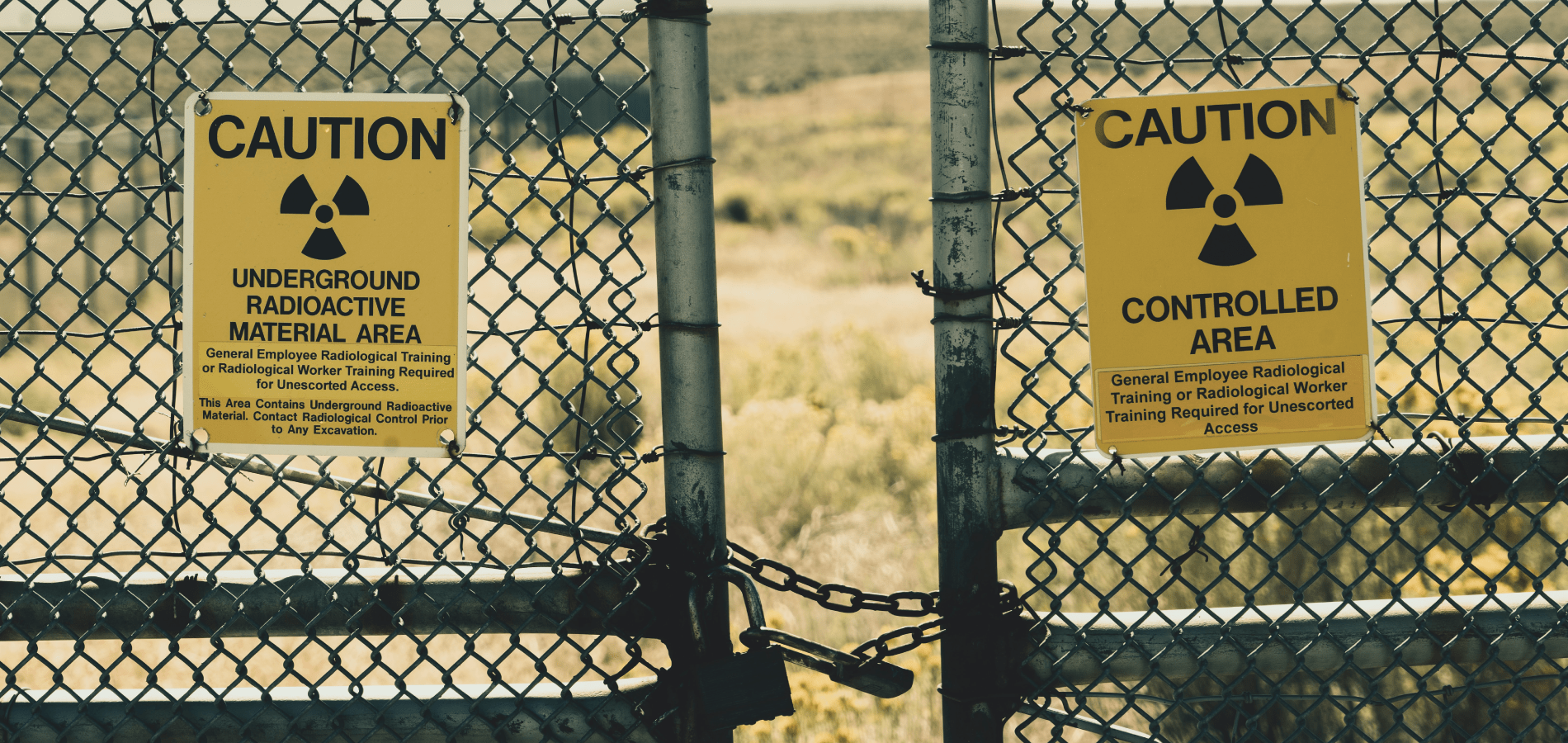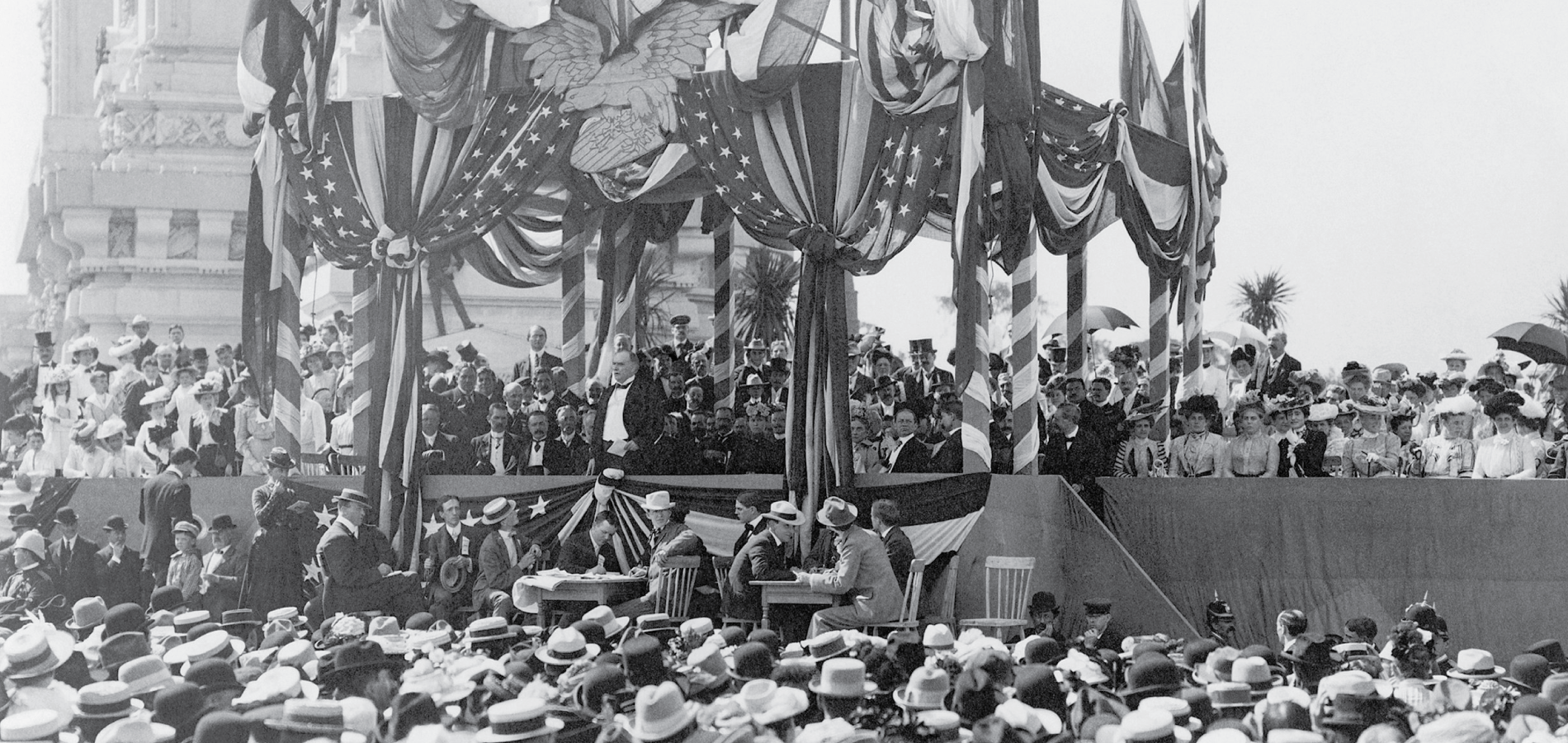The United States has a dark history regarding its immigration policies, including a spate of outright racist immigration restrictions that curtailed—or completely eliminated—influx of immigrants from certain countries around the world. One example of these laws was the Chinese Exclusion Act,[1]To execute certain treaty stipulations relating to Chinese., Chapter 126, 47 Congress, Public Law 47-126. 22 Stat. 58 (1882). This statute can be found in HeinOnline’s U.S. Statutes at Large database. which restricted immigration from China for decades after its passage in 1882. In this edition of Secrets of the Serial Set, we’ll use the vast resource of the U.S. Congressional Serial Set—which is now available in its entirety in HeinOnline—to dive into why the Chinese Exclusion Act was passed, and the impact it had on Chinese immigrants looking for work and a better life in America.
Chinese Immigrants in America
During the middle of the 19th century, Chinese peasants were suffering from the economic turmoil resulting from the Opium Wars[2]“Heroin and heroin paraphernalia.” U.S. Congressional Serial Set, , 1970, pp. I-84. HeinOnline, https://heinonline.org/HOL/P?h=hein.usccsset/usconset21747&i=1598. This document can be found in HeinOnline’s U.S. … Continue reading with England, and floods and drought were having disastrous impacts on crops. They began looking toward America for the hope of a better and more profitable life—and when the California Gold Rush[3]“Immigration and naturalization systems of United States.” Congressional Serial Set, , 1950, pp. I-XXVI. HeinOnline, https://heinonline.org/HOL/P?h=hein.usccsset/usconset51550&i=68. This document can be found in … Continue reading began in 1848, Chinese immigration to the United States significantly increased. However, the Rush didn’t last for long, and as gold became more difficult to come by, white settlers began to see Chinese immigrants as a threat. In 1858, California attempted to pass legislation banning Chinese from entering the state, but this was shot down by the state’s Supreme Court. Compounding animosities, some 15-20,000 Chinese immigrants were hired to work on the transcontinental railroad and other significant labor projects.[4]“Report of Joint Special Committee to Investigate Chinese Immigration.” U.S. Congressional Serial Set, , 1876, pp. I-1282. HeinOnline, https://heinonline.org/HOL/P?h=hein.usccsset/usconset23581&i=478. This document can … Continue reading

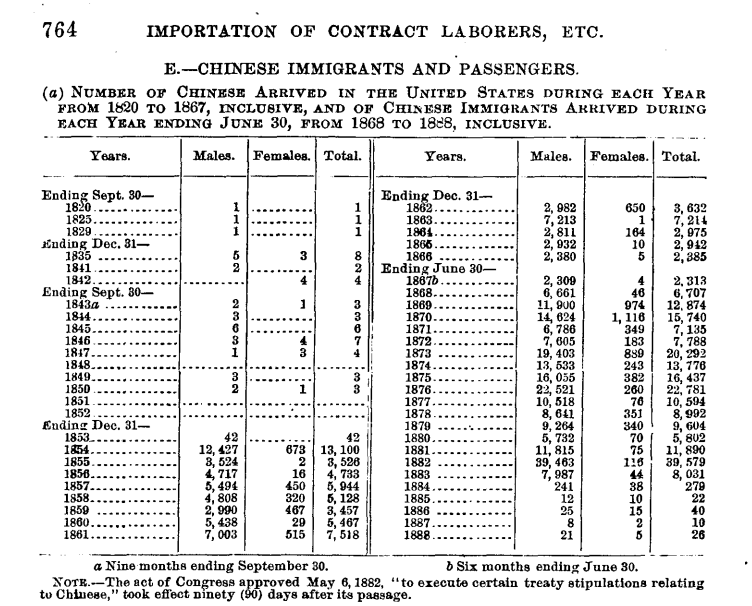
As these projects completed, Chinese immigrants began to make their homes in cities such as San Francisco,[5]“Angel Island Immigration Station Restoration and Preservation Act.” U.S. Congressional Serial Set, , 2005, pp. 1-6. HeinOnline, https://heinonline.org/HOL/P?h=hein.usccsset/usconset50339&i=233. This document can be … Continue reading where they took up low-paying jobs in factories and restaurants. Post-Civil War, the American economy was in decline, and many white people began to blame the Chinese immigrants for taking jobs and for depressing wages. This sentiment was purported by labor unions including the Workingman’s Party, the American Federation of Labor,[6]“Industrial Commission reports, v. 15; immigration; education.” U.S. Congressional Serial Set, , 1901, pp. I-260. HeinOnline, https://heinonline.org/HOL/P?h=hein.usccsset/usconset30034&i=82. This document can be found … Continue reading and the Knights of Labor, all of which supported a Chinese Exclusion Act because they felt that employers were using Chinese immigrants to keep wages low.
In 1868, the United States signed the Burlingame Treaty[7]TS 48: China; Immigration (Burlingame Treaty), 16 Stat. 739 (1868). This treaty can be found in HeinOnline’s World Treaty Library. with China, which allowed for unrestricted Chinese immigration in America, sparking violence and protests in cities like Los Angeles. The anti-Chinese sentiment grew when, during a shoe workers strike in North Adams in 1870,[8]Andrew Gyory. Closing the Gate: Race, Politics, and the Chinese Exclusion Act (1998). This document can be found in HeinOnline’s Immigration Law & Policy in the U.S. database. all of the workers were replaced by Chinese immigrants.
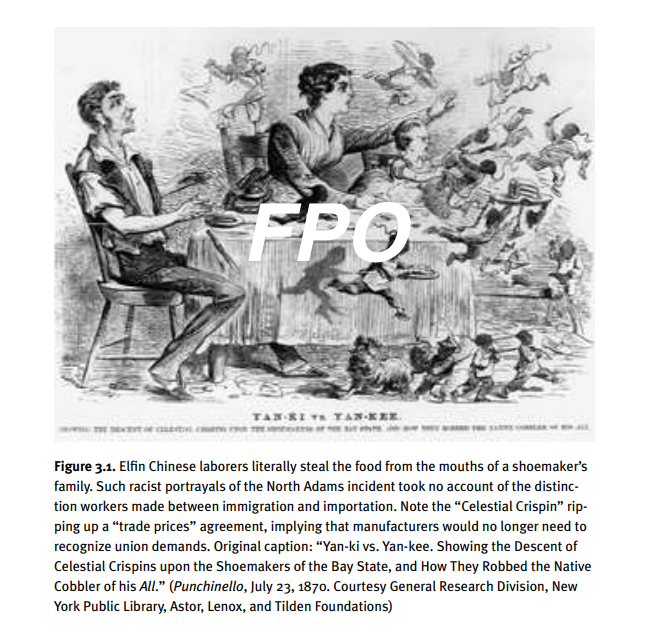
Attempts at Exclusion
In 1879, Congress tried to pass legislation to limit immigration from China to 15 passengers per vessel[9]“Immigration to relieve labor problems in Hawaii, with minority report.” U.S. Congressional Serial Set, , 1922, pp. 1-14. HeinOnline, https://heinonline.org/HOL/P?h=hein.usccsset/usconset24731&i=737. This document can … Continue reading—it passed in the House and Senate, but it was vetoed by President Hayes because it violated the Burlingame Treaty. However, the Burlingame Treaty was updated by the Angell Treaty of 1880,[10]Number 1894/2 – United States and China, 1 Treaties and Agreements with and concerning China 1894-1919 9 (1894-1911). This treaty can be found in HeinOnline’s U.S. Treaties and Agreements Library. which gave the United States the ability to curtail Chinese immigration. Two years later, Senator John F. Miller of California introduced the Chinese Exclusion Act to block immigration of Chinese laborers for 20 years. This measure again passed in the House and Senate but was vetoed by President Arthur.[11]“Message of President returning act to execute certain treaty stipulations relating to Chinese.” U.S. Congressional Serial Set, , 1881, pp. 1-36. HeinOnline, … Continue reading The bill was then amended to reduce the ban to 10 years, and President Arthur agreed to sign it into law on May 6, 1882.[12]“State of the Union address.” U.S. Congressional Serial Set, , 1892, pp. I-654. HeinOnline, https://heinonline.org/HOL/P?h=hein.usccsset/usconset33386&i=192. This document can be found in HeinOnline’s U.S. … Continue reading The law specifically banned “skilled and unskilled laborers and Chinese employed in mining”[13]“Senate Journal, 47th Congress, 1st Session.” U.S. Congressional Serial Set, , 1881, pp. 27-1750. HeinOnline, https://heinonline.org/HOL/P?h=hein.usccsset/usconset23802&i=396. This document can be found in … Continue reading—those who violated the law could face imprisonment and deportation.
Chinese immigrants who were qualified to enter the United States—and there weren’t many—were required to receive certification[14]“State of the Union address.” U.S. Congressional Serial Set, , 1892, pp. I-654. HeinOnline, https://heinonline.org/HOL/P?h=hein.usccsset/usconset33386&i=191. This document can be found in HeinOnline’s U.S. … Continue reading by the Chinese government. Those who left the United States would need to be certified to re-enter,[15]“State of the Union address.” U.S. Congressional Serial Set, , 1892, pp. I-654. HeinOnline, https://heinonline.org/HOL/P?h=hein.usccsset/usconset33386&i=191. This document can be found in HeinOnline’s U.S. … Continue reading and the act excluded them from citizenship.

In 1888, the Scott Act[16]“Instructions given collectors and others, for enforcement of Chinese Exclusion Act.” U.S. Congressional Serial Set, , 1893, pp. 1-18. HeinOnline, https://heinonline.org/HOL/P?h=hein.usccsset/usconset33013&i=59. This … Continue reading continued to expand upon the Chinese Exclusion Act by banning re-entry into the United States, except for Chinese tourists, merchants, teachers, students, and government officials.
Upheld in Court
The Supreme Court affirmed the constitutionality of the Chinese Exclusion Act and the Scott Act in the case Chae Chan Ping v. United States[17]Chinese Exclusion Case, The – Chae Chan Ping v. United States, 130 U.S. 581, 610. This case can be found in HeinOnline’s U.S. Supreme Court Library. in 1889, where the majority opinion stated, “the power of exclusion of foreigners [is] an incident of sovereignty belonging to the government of the United States as a part of those sovereign powers delegated by the Constitution.”
In 1892, the Geary Act renewed the Chinese Exclusion Act[18]“State of the Union address.” U.S. Congressional Serial Set, , 1892, pp. I-654. HeinOnline, https://heinonline.org/HOL/P?h=hein.usccsset/usconset33386&i=189. This document can be found in HeinOnline’s U.S. … Continue reading for another 10 years, and it was again renewed with no end date in 1902. This renewal required all Chinese in America to gain a certificate of residence or face deportation.
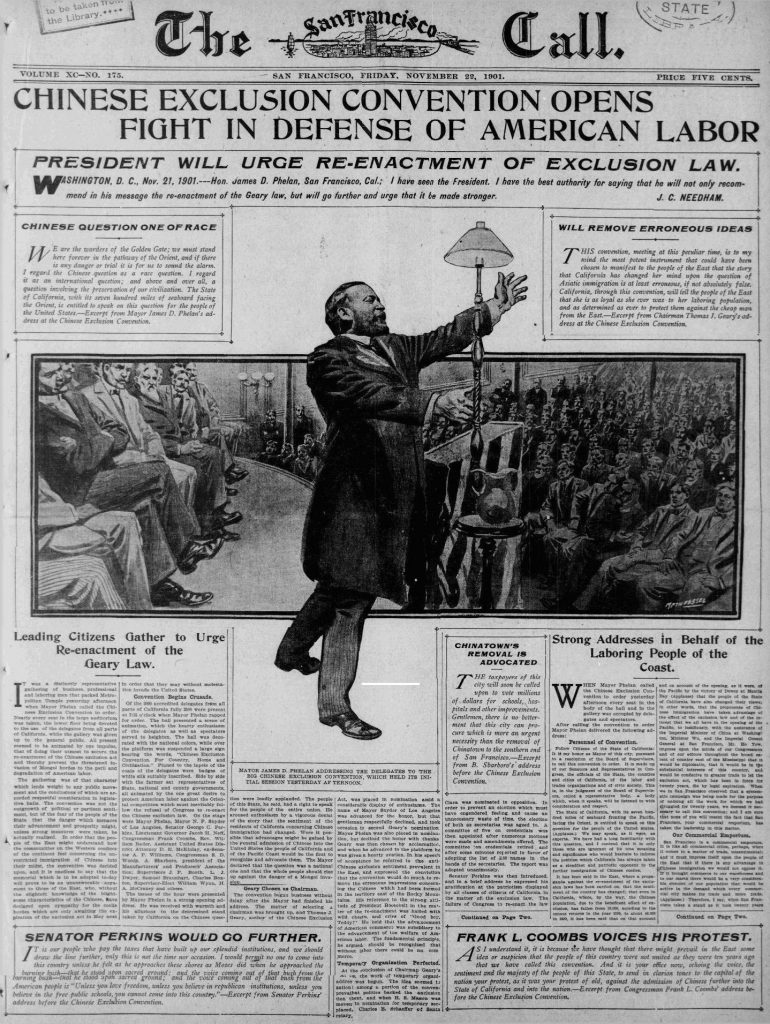
Many Chinese immigrants attempted to petition for habeas corpus, but the court case Lem Moon Sing v. United States[19]Lem Moon Sing v. United States, 158 U.S. 538, 549 (1895). This case can be found in HeinOnline’s U.S. Supreme Court Library. upheld an act passed in 1894 that barred these petitions. In 1905, the United States v. Ju Toy[20]United States v. Ju Toy, 198 U.S. 253, 279 (1905). This case can be found in HeinOnline’s U.S. Supreme Court Library. confirmed that port inspectors and the Secretary of Commerce could have the final say in which immigrants would be allowed in the United States.
As a result, anti-America sentiment in China began to build, and China boycotted U.S. goods from 1905 to 1906.[21]“Chinese boycott or change of exclusion clause of Chinese treaty.” , , 1905, pp. 1-8. HeinOnline, https://heinonline.org/HOL/P?h=hein.usccsset/usconset30769&i=857. This document can be found in HeinOnline’s U.S. … Continue reading Many Republicans at the time disagreed with the Chinese Exclusion Act—Republican senator George Frisbie Hoar of Massachusetts stated that it was “nothing less than the legalization of racial discrimination.”[22]1 16 (2021) Brief Amici Curiae of Asian American Coalition for Education and the Asian American Legal Foundation. This document can be found in HeinOnline’s Preview of United States Court Cases database. However, the act was popular with Democrats, labor unions, and much of the American population, especially those in the West. Anti-Chinese sentiment was reflected in both the Rock Springs massacre of 1885,[23]“Presidential message on Chinese immigration.” U.S. Congressional Serial Set, , 1885, pp. 1-72. HeinOnline, https://heinonline.org/HOL/P?h=hein.usccsset/usconset36519&i=602. This document can be found in … Continue reading where white miners attacked Chinatown in Rock Springs, Wyoming, and 28 Chinese were killed, as well as in the Hells Canyon massacre of 1887,[24]Michael J. Nove, Ambushed: The Hells Canyon Massacre of 1887, 68 OR. St. B. BULL. 30 (2007). This article can be found in HeinOnline’s Bar Journals Library. where 34 Chinese miners were killed in Oregon under suspicious circumstances.
However, the banning of Chinese immigrants led to their replacement by Japanese workers. The Immigration Act of 1924[25]To limit the immigration of aliens into the United States, and for other purposes., Public Law 68-139 / Chapter 190, 68 Congress. 43 Stat. 153 (1924). This statute can be found in HeinOnline’s U.S. Statutes at Large database. would expand the Chinese Exclusion Act by banning all Chinese immigrants and restricting other Asian groups, including the Japanese, as it stated that immigration would be banned from countries whose people are already restricted from American citizenship.
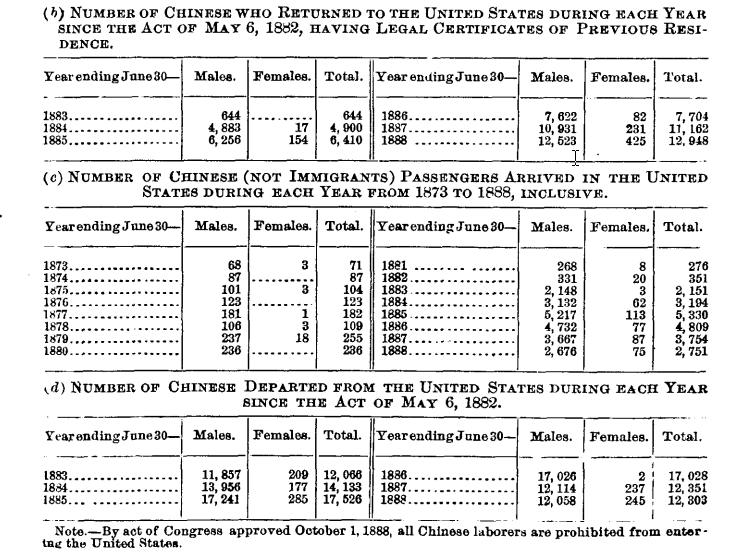
Restrictions and Repeals
The Chinese Exclusion Act was not repealed until the Magnuson Act in 1943,[26]“Repealing Chinese exclusion acts, establishing quotas, etc.” U.S. Congressional Serial Set, , 1943, pp. 1-10. HeinOnline, https://heinonline.org/HOL/P?h=hein.usccsset/usconset23032&i=605. This document can be found in … Continue reading and this was for merely political reasons—China had become an ally of the United States during World War II. The Magnuson Act allowed Chinese immigrants to become citizens, but it restricted immigration to only 105 immigrants per year, and restrictions on other Asian countries were not lifted. It wasn’t until the Immigration and Nationality Act of 1965[27]To amend the Immigration and Nationality Act, and for other purposes., Public Law 89-236, 89 Congress. 79 Stat. 911 (1965). This statute can be found in HeinOnline’s U.S. Statutes at Large database. that racial-based immigration would be banned, and immigrants from China and other Asian countries could come to the United States in full flux.
Nearly 50 years later, in 2011, the Senate passed Senate Resolution 201,[28]2011 J.S. U.S. H.B. 69 (2011). This resolution can be found in HeinOnline’s U.S. Congressional Documents database. which condemned the Chinese Exclusion Act and vowed to preserve civil rights for all. The House passed a similar statement in House Resolution 683.[29]“Final activity report of Committee on Judiciary, 112th Congress.” U.S. Congressional Serial Set, , 2013, pp. 1-123. HeinOnline, https://heinonline.org/HOL/P?h=hein.usccsset/usconset50730&i=233. in 2012. This document … Continue reading
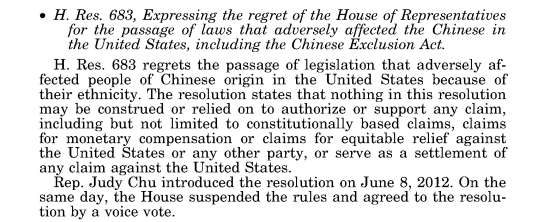
Continue Your Research by Diving into the Serial Set
The U.S. Congressional Serial Set database is provided at no additional cost to all Core+ subscribers. We welcome you to explore this uniquely designed database to unearth all of the hidden stories within U.S. history—you never know what you might discover.
HeinOnline Sources[+]
| ↑1 | To execute certain treaty stipulations relating to Chinese., Chapter 126, 47 Congress, Public Law 47-126. 22 Stat. 58 (1882). This statute can be found in HeinOnline’s U.S. Statutes at Large database. |
|---|---|
| ↑2 | “Heroin and heroin paraphernalia.” U.S. Congressional Serial Set, , 1970, pp. I-84. HeinOnline, https://heinonline.org/HOL/P?h=hein.usccsset/usconset21747&i=1598. This document can be found in HeinOnline’s U.S. Congressional Serial Set database. |
| ↑3 | “Immigration and naturalization systems of United States.” Congressional Serial Set, , 1950, pp. I-XXVI. HeinOnline, https://heinonline.org/HOL/P?h=hein.usccsset/usconset51550&i=68. This document can be found in HeinOnline’s U.S. Congressional Serial Set database. |
| ↑4 | “Report of Joint Special Committee to Investigate Chinese Immigration.” U.S. Congressional Serial Set, , 1876, pp. I-1282. HeinOnline, https://heinonline.org/HOL/P?h=hein.usccsset/usconset23581&i=478. This document can be found in HeinOnline’s U.S. Congressional Serial Set database. |
| ↑5 | “Angel Island Immigration Station Restoration and Preservation Act.” U.S. Congressional Serial Set, , 2005, pp. 1-6. HeinOnline, https://heinonline.org/HOL/P?h=hein.usccsset/usconset50339&i=233. This document can be found in HeinOnline’s U.S. Congressional Serial Set database. |
| ↑6 | “Industrial Commission reports, v. 15; immigration; education.” U.S. Congressional Serial Set, , 1901, pp. I-260. HeinOnline, https://heinonline.org/HOL/P?h=hein.usccsset/usconset30034&i=82. This document can be found in HeinOnline’s U.S. Congressional Serial Set database. |
| ↑7 | TS 48: China; Immigration (Burlingame Treaty), 16 Stat. 739 (1868). This treaty can be found in HeinOnline’s World Treaty Library. |
| ↑8 | Andrew Gyory. Closing the Gate: Race, Politics, and the Chinese Exclusion Act (1998). This document can be found in HeinOnline’s Immigration Law & Policy in the U.S. database. |
| ↑9 | “Immigration to relieve labor problems in Hawaii, with minority report.” U.S. Congressional Serial Set, , 1922, pp. 1-14. HeinOnline, https://heinonline.org/HOL/P?h=hein.usccsset/usconset24731&i=737. This document can be found in HeinOnline’s U.S. Congressional Serial Set database. |
| ↑10 | Number 1894/2 – United States and China, 1 Treaties and Agreements with and concerning China 1894-1919 9 (1894-1911). This treaty can be found in HeinOnline’s U.S. Treaties and Agreements Library. |
| ↑11 | “Message of President returning act to execute certain treaty stipulations relating to Chinese.” U.S. Congressional Serial Set, , 1881, pp. 1-36. HeinOnline, https://heinonline.org/HOL/P?h=hein.usccsset/usconset23808&i=972. This document can be found in HeinOnline’s U.S. Congressional Serial Set database. |
| ↑12 | “State of the Union address.” U.S. Congressional Serial Set, , 1892, pp. I-654. HeinOnline, https://heinonline.org/HOL/P?h=hein.usccsset/usconset33386&i=192. This document can be found in HeinOnline’s U.S. Congressional Serial Set database. |
| ↑13 | “Senate Journal, 47th Congress, 1st Session.” U.S. Congressional Serial Set, , 1881, pp. 27-1750. HeinOnline, https://heinonline.org/HOL/P?h=hein.usccsset/usconset23802&i=396. This document can be found in HeinOnline’s U.S. Congressional Serial Set database. |
| ↑14, ↑15 | “State of the Union address.” U.S. Congressional Serial Set, , 1892, pp. I-654. HeinOnline, https://heinonline.org/HOL/P?h=hein.usccsset/usconset33386&i=191. This document can be found in HeinOnline’s U.S. Congressional Serial Set database. |
| ↑16 | “Instructions given collectors and others, for enforcement of Chinese Exclusion Act.” U.S. Congressional Serial Set, , 1893, pp. 1-18. HeinOnline, https://heinonline.org/HOL/P?h=hein.usccsset/usconset33013&i=59. This document can be found in HeinOnline’s U.S. Congressional Serial Set database. |
| ↑17 | Chinese Exclusion Case, The – Chae Chan Ping v. United States, 130 U.S. 581, 610. This case can be found in HeinOnline’s U.S. Supreme Court Library. |
| ↑18 | “State of the Union address.” U.S. Congressional Serial Set, , 1892, pp. I-654. HeinOnline, https://heinonline.org/HOL/P?h=hein.usccsset/usconset33386&i=189. This document can be found in HeinOnline’s U.S. Congressional Serial Set database. |
| ↑19 | Lem Moon Sing v. United States, 158 U.S. 538, 549 (1895). This case can be found in HeinOnline’s U.S. Supreme Court Library. |
| ↑20 | United States v. Ju Toy, 198 U.S. 253, 279 (1905). This case can be found in HeinOnline’s U.S. Supreme Court Library. |
| ↑21 | “Chinese boycott or change of exclusion clause of Chinese treaty.” , , 1905, pp. 1-8. HeinOnline, https://heinonline.org/HOL/P?h=hein.usccsset/usconset30769&i=857. This document can be found in HeinOnline’s U.S. Congressional Serial Set database. |
| ↑22 | 1 16 (2021) Brief Amici Curiae of Asian American Coalition for Education and the Asian American Legal Foundation. This document can be found in HeinOnline’s Preview of United States Court Cases database. |
| ↑23 | “Presidential message on Chinese immigration.” U.S. Congressional Serial Set, , 1885, pp. 1-72. HeinOnline, https://heinonline.org/HOL/P?h=hein.usccsset/usconset36519&i=602. This document can be found in HeinOnline’s U.S. Congressional Serial Set database. |
| ↑24 | Michael J. Nove, Ambushed: The Hells Canyon Massacre of 1887, 68 OR. St. B. BULL. 30 (2007). This article can be found in HeinOnline’s Bar Journals Library. |
| ↑25 | To limit the immigration of aliens into the United States, and for other purposes., Public Law 68-139 / Chapter 190, 68 Congress. 43 Stat. 153 (1924). This statute can be found in HeinOnline’s U.S. Statutes at Large database. |
| ↑26 | “Repealing Chinese exclusion acts, establishing quotas, etc.” U.S. Congressional Serial Set, , 1943, pp. 1-10. HeinOnline, https://heinonline.org/HOL/P?h=hein.usccsset/usconset23032&i=605. This document can be found in HeinOnline’s U.S. Congressional Serial Set database. |
| ↑27 | To amend the Immigration and Nationality Act, and for other purposes., Public Law 89-236, 89 Congress. 79 Stat. 911 (1965). This statute can be found in HeinOnline’s U.S. Statutes at Large database. |
| ↑28 | 2011 J.S. U.S. H.B. 69 (2011). This resolution can be found in HeinOnline’s U.S. Congressional Documents database. |
| ↑29 | “Final activity report of Committee on Judiciary, 112th Congress.” U.S. Congressional Serial Set, , 2013, pp. 1-123. HeinOnline, https://heinonline.org/HOL/P?h=hein.usccsset/usconset50730&i=233. in 2012. This document can be found in HeinOnline’s U.S. Congressional Serial Set database. |

